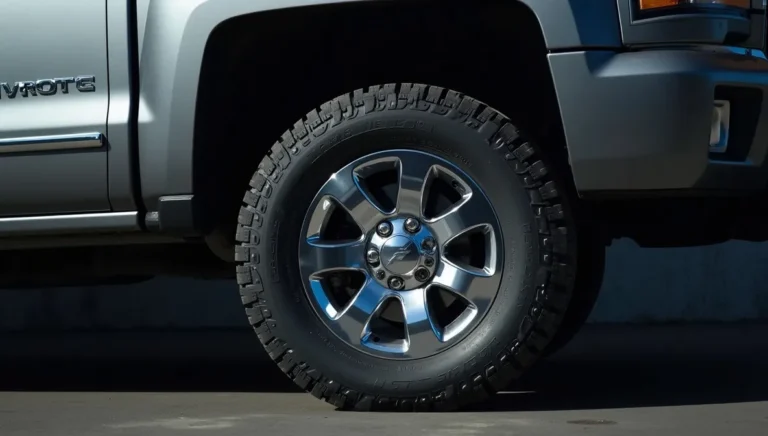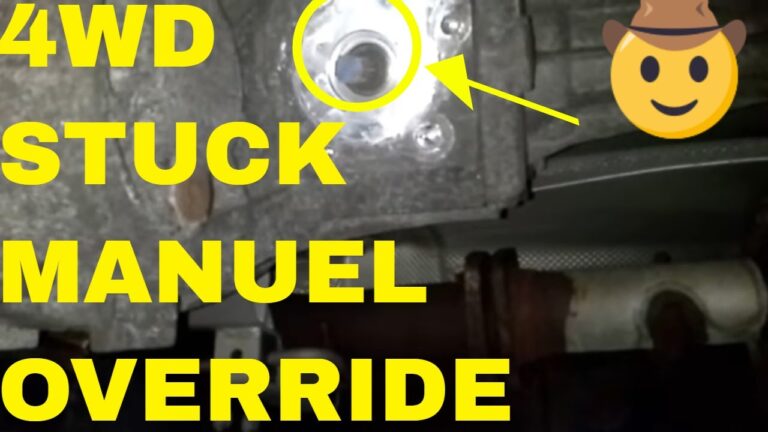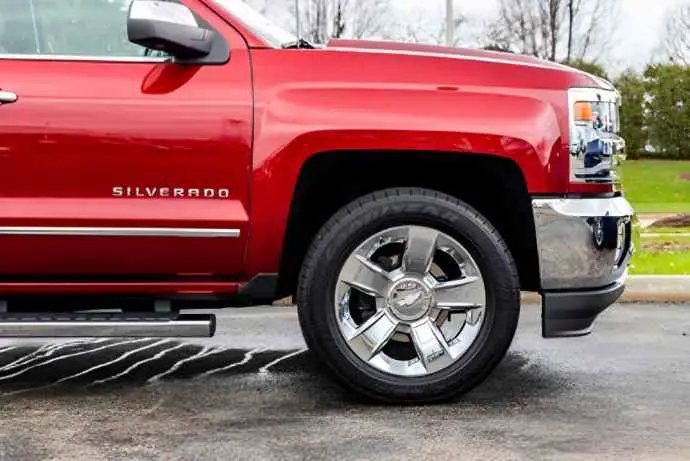Does A 1996 Chevy Silverado Have Obd Obd2 Port?
Ever wondered if your trusty 1996 Chevy Silverado has that magic OBD2 port for easy diagnostics?
Let’s get straight to the point about the 1996 Chevy Silverado and its OBD/OBD2 situation.
Decoding the OBD Mystery: Does a 1996 Chevy Silverado Have an OBD2 Port?
The burning question: Does a 1996 Chevy Silverado have an OBD2 port?
Generally, yes, a 1996 Chevy Silverado *should* have an OBD2 (On-Board Diagnostics II) port.
1996 was the year the OBD2 system became mandatory for all cars and light trucks sold in the United States.
This means your Silverado likely complies with the OBD2 standard.
But, before you start celebrating and plugging in your scan tool, let’s cover some crucial details.
Why the OBD2 Port Matters for Your 1996 Chevy Silverado
Why is knowing about the OBD2 port on your ’96 Silverado even important?
Well, the OBD2 port is your gateway to understanding your truck’s health.
It allows mechanics (and you, with the right scan tool) to read diagnostic trouble codes (DTCs).
These codes pinpoint problems within the engine, transmission, and other systems.
Think of it as your Silverado’s way of talking to you, telling you what’s wrong.
Without a functional OBD2 port, diagnosing issues becomes way more complicated and expensive.
Finding the OBD2 Port Location in Your ’96 Silverado
Okay, so you’re convinced your Silverado *should* have one, but where is it?
Typically, the OBD2 port in a 1996 Chevy Silverado is located under the dashboard on the driver’s side.
Look for a 16-pin connector, usually near the steering column or the center console area.
It might be tucked away a bit, so you might need a flashlight to get a good look.
Confirming OBD2 Compliance on Your 1996 Chevy Silverado
Even though 1996 was the magic year, there’s always a *slight* chance of exceptions.
Here’s how to double-check your ’96 Silverado’s OBD situation:
- Visual Inspection: Locate the port and make sure it’s a 16-pin connector. That’s the OBD2 standard.
- Check the Vehicle Emission Control Information (VECI) Label: This sticker is usually under the hood. It should state whether the vehicle complies with OBD2 regulations.
- Consult Your Owner’s Manual: The manual *should* have information about the vehicle’s diagnostic systems.
These steps help ensure that your Silverado is truly OBD2 compliant and ready for scanning.
Troubleshooting OBD2 Port Issues on Your 1996 Chevy Silverado
What if you find the port, but it’s not working?
Here are a few common problems and fixes for your 1996 Chevy Silverado’s OBD2 port:
- Blown Fuses: The OBD2 port is often connected to a fuse. Check your Silverado’s fuse box (usually located under the hood or inside the cab) and replace any blown fuses related to the diagnostic system.
- Wiring Problems: Damaged or corroded wires can prevent the port from working. Inspect the wiring harness connected to the OBD2 port for any signs of damage.
- Faulty Scan Tool: It sounds obvious, but make sure your scan tool is functioning correctly and compatible with OBD2 systems. Try it on another vehicle to rule out issues.
- ECM Problems: In rare cases, a faulty Engine Control Module (ECM) can prevent the OBD2 port from functioning. This usually requires professional diagnosis.
Using an OBD2 Scanner on Your ’96 Silverado: A Quick Guide
Ready to pull some codes?
Here’s a basic rundown:
- Plug in the Scanner: Connect your OBD2 scanner to the port.
- Turn the Ignition On: Turn the key to the “on” position without starting the engine.
- Follow the Scanner’s Instructions: Navigate the scanner’s menu to read diagnostic trouble codes (DTCs).
- Record the Codes: Write down any codes that appear. These are your clues!
- Research the Codes: Use online resources or a repair manual to understand what each code means.
Remember, reading the codes is just the first step.
You’ll need to diagnose the underlying problem to fix your Silverado.
So, to wrap things up, a 1996 Chevy Silverado *should* have an OBD2 port, making diagnostics much easier.
 “`html
“`html
So, to wrap things up, a 1996 Chevy Silverado *should* have an OBD2 port, making diagnostics much easier.
Understanding OBD2 Readiness Monitors on Your 1996 Chevy Silverado
You got your scanner hooked up to the OBD2 port on your 1996 Chevy Silverado, now what?
One crucial thing to understand is OBD2 readiness monitors.
These monitors are like little detectives within your Silverado’s computer, constantly checking different systems to make sure they’re working right.
Think of them as pre-flight checks for your truck’s engine and emissions systems.
If a monitor isn’t “ready,” it means that particular system hasn’t completed its self-test, and it could affect your truck’s performance or even prevent it from passing an emissions test.
Common OBD2 readiness monitors in a 1996 Chevy Silverado include the catalyst monitor, oxygen sensor monitor, evaporative system monitor, and EGR system monitor.
Why OBD2 Readiness Monitors Matter
Why should you care about these readiness monitors when using the OBD2 port on your 1996 Chevy Silverado?
Well, if you’ve recently cleared trouble codes or disconnected the battery, the monitors will reset and need to run their tests again.
This process can take some time and driving under specific conditions.
If you’re trying to get your Silverado inspected, the inspection station will likely check the readiness monitors, and if they’re not all ready, you’ll fail.
I’ve seen countless folks get tripped up by this, so it’s worth understanding.
Driving Cycles to Set OBD2 Readiness Monitors on Your ’96 Silverado
Okay, so how do you get those OBD2 readiness monitors to set on your 1996 Chevy Silverado after using the OBD2 port?
This is where the concept of a “driving cycle” comes in.
A driving cycle is a specific set of driving conditions that encourages the monitors to run their tests.
The exact driving cycle varies depending on the monitor and the vehicle, but here’s a general idea:
- Cold Start: Start the engine after it’s been sitting for several hours.
- Idling: Let the engine idle for a few minutes.
- Steady Speed Cruising: Drive at a steady speed (e.g., 45-55 mph) for several minutes.
- Stop-and-Go Driving: Do some stop-and-go driving with moderate acceleration and deceleration.
- Highway Driving: Drive on the highway at a steady speed (e.g., 60-70 mph) for a longer period.
Consult your Silverado’s repair manual or online resources for the specific driving cycle recommended for each monitor.
It might take multiple driving cycles to get all the monitors to set, so be patient.
Advanced Diagnostics with Your 1996 Chevy Silverado OBD2 Port
The OBD2 port on your 1996 Chevy Silverado isn’t just for reading trouble codes.
It can also provide valuable live data about your truck’s engine and other systems.
With a more advanced scan tool, you can monitor things like engine coolant temperature, oxygen sensor readings, fuel trim, and more, accessible via the OBD2 port.
This data can help you diagnose intermittent problems or fine-tune your engine’s performance.
Using Live Data for Troubleshooting
How can live data from the OBD2 port help you troubleshoot issues on your ’96 Silverado?
Let’s say you’re experiencing poor fuel economy.
You could use your scan tool to monitor the oxygen sensor readings and fuel trim values.
If the oxygen sensor readings are consistently high or low, or if the fuel trim values are significantly positive or negative, it could indicate a problem with the oxygen sensors, fuel injectors, or other components, all diagnosable through the OBD2 port.
By analyzing the live data, you can narrow down the possible causes of the problem and save yourself time and money on unnecessary repairs.
OBD2 Port and Emissions Testing: What You Need to Know
If you live in an area with emissions testing requirements, the OBD2 port on your 1996 Chevy Silverado plays a crucial role, and plugging in a scanner is essential to pass the test.
During the test, the inspector will connect to your truck’s OBD2 port to check for trouble codes and the status of the readiness monitors.
If there are any active trouble codes or if the readiness monitors aren’t set, your Silverado will likely fail the test.
Before heading to the inspection station, make sure you’ve addressed any trouble codes and that the readiness monitors are set.
Common Mistakes When Using the 1996 Chevy Silverado OBD2 Port
It’s easy to make mistakes when working with the OBD2 port on your 1996 Chevy Silverado.
Here are a few common pitfalls to avoid:
- Using an Incompatible Scan Tool: Make sure your scan tool is compatible with OBD2 systems and your specific vehicle.
- Ignoring Readiness Monitors: Don’t assume your truck is ready for inspection just because there are no trouble codes. Check the readiness monitors.
- Clearing Codes Without Diagnosing the Problem: Clearing trouble codes without addressing the underlying issue is like putting a bandage on a broken leg. The problem will likely return.
- Forcing the Connector: Don’t force the scan tool connector into the OBD2 port. If it doesn’t fit easily, something might be wrong.
Is it Worth Getting a Professional Scan?
Sometimes, even with a good scanner, you can’t fix it yourself and need to go in for a professional scan to the OBD2 port.
If you’re not comfortable working on your truck yourself or if you’re dealing with a complex issue, it’s best to take your Silverado to a qualified mechanic for diagnosis and repair.
They have the expertise and equipment to properly diagnose and fix the problem using the OBD2 port and other diagnostic tools.
Frequently Asked Questions
Can I use any OBD2 scanner on my 1996 Chevy Silverado?
While most generic OBD2 scanners will work, some advanced features might not be compatible, its better to verify compatibility.
What does it mean when an OBD2 readiness monitor isn’t ready?
It means the system hasn’t completed its self-test cycle, and you might need to perform a specific driving cycle.
How do I reset the OBD2 system on my 1996 Chevy Silverado?
Clearing trouble codes with a scan tool or disconnecting the battery can reset the system, but the readiness monitors will need to be reset through driving cycles.
Is there a fuse specifically for the OBD2 port?
Yes, check your Silverado’s fuse box diagram to locate the fuse for the diagnostic system, as issues with the OBD2 port can stem from blown fuses.
What if I can’t find the OBD2 port?
Refer to your owner’s manual or search online for the specific location in your 1996 Chevy Silverado, as it’s generally under the driver’s side dashboard.
So, whether you’re diagnosing a check engine light or preparing for an emissions test, understanding the OBD2 port on your 1996 Chevy Silverado is key.
“““json
“`



